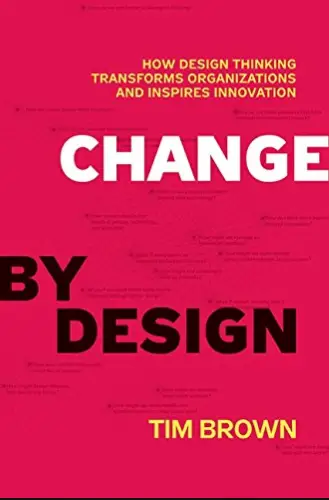Change by Design
Book Author: Tim Brown
Summary reviewed by:
Terrence Timmons
Terrence Timmons
Analyst
Bachelor of Arts (BA), University Of California, Santa Barbara 2019
With over 4 years of experience as an analyst. Terrence Timmons is committed to analyzing summaries without compromising on quality.
Change by Design: Summary
Unlock the secret to groundbreaking innovation! In "Change by Design," Tim Brown introduces the transformative power of design thinking—a human-centered approach to problem-solving that goes beyond traditional boundaries. This isn't just about aesthetics or product design; it's about reimagining entire organizations and industries.
Brown, CEO of IDEO, the world-renowned design firm, delves deep into the process, principles, and practices of design thinking. He emphasizes empathy, experimentation, and iteration as the cornerstones of this approach. By placing people at the heart of the design process, businesses can address complex challenges in novel ways, leading to solutions that are not only effective but also deeply resonant with users.
Through a plethora of case studies, Brown showcases how design thinking has been applied to diverse sectors, from healthcare to finance, and the remarkable outcomes it has achieved. This book is a clarion call for leaders, innovators, and anyone seeking to drive change: Embrace design thinking, and witness the profound impact it can have on the world around you.
Change by Design: Genres
Non-Fiction
Business
Design
Innovation
Organizational Development
Change by Design: Themes
Human-Centered Design: At the core of design thinking is a deep understanding of the people for whom we’re designing. By observing and engaging with users, innovators can uncover hidden needs and desires. For instance, when IDEO worked on a new line of prams, they observed parents in action, leading to designs that catered to real-world challenges.
Empathy: Empathy is the ability to understand and share the feelings of another. Brown emphasizes the importance of empathy in the design process. When IDEO designed a new patient experience for a hospital, they started by understanding the emotional journey of patients, leading to a more compassionate and efficient system.
Prototyping: Before arriving at a final solution, design thinkers create multiple prototypes—tangible representations of ideas. This allows for testing, feedback, and refinement. When designing a new product or service, IDEO often creates several prototypes, like when they were reimagining the classroom experience, leading to innovative furniture designs that were flexible and conducive to modern teaching methods.
Collaboration: Design thinking thrives in a collaborative environment. Diverse teams bring together a mix of skills and perspectives, leading to richer solutions. Brown shares instances where interdisciplinary teams at IDEO came together, such as when engineers, designers, and physicians collaborated to redesign a surgical tool.
Iteration: Design thinking is an iterative process. Solutions are constantly refined based on feedback and new insights. Brown highlights this through various projects, like when IDEO revisited a product design after initial user feedback, leading to a more user-friendly and successful final product.


Change by Design
Date Published: September 29, 2009
Disclaimer: As an Amazon Associate I earn from qualifying purchases.




